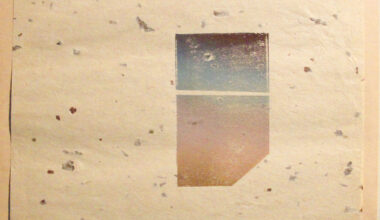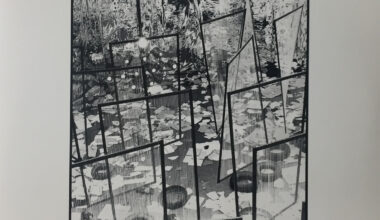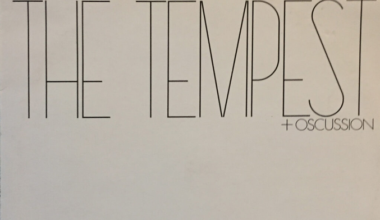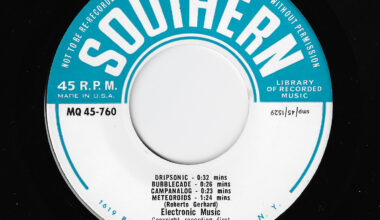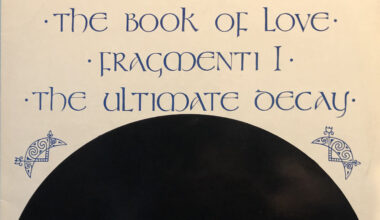This month, our resident archivist digs out a ridiculously scarce record by Ernest Berk, whose london-based electronic music studio is all but forgotten

Ernest Berk was a German choreographer and composer who lived in London. When I first bought this record, there was hardly any mention of him on the internet at all. He was well known as a choreographer, and would create work where the performers would be naked before it was fashionable with the likes of ‘Oh Calcutta!’ and ‘Hair’.
I found out about him through the Hugh Davies book, ‘International Electronic Music Catalog’, which was published in 1967 and listed every electronic music studio, composition and release that he could find up to the end of 1966.
In the section devoted to the UK, Ernest Berk was the largest entry. Most of the entries are compositions he made for dance pieces, usually his own. Perhaps he knew Hugh Davies, as he was also based in London in 1967 following a couple of years in Cologne playing in Stockhausen’s ensemble and cataloguing his work.
I was intrigued by Ernest Berk, here was someone living in London in the 1960s who had an electronic music studio and produced all this work, but whose recordings are impossible to find. There’s just one record of his on Discogs, a library disc with Berk and Mike Vickers on one side, and Bill McGuffie on the other.
There is nothing online about this particular record I have. Side one is called ‘Initiation’, and side two is ‘Gemini’. They’re both ballet scores. ’Initiation’ is about “modern youth and its ritualistic behaviour” and has titles like ‘Tittilation’ (yes, spelt with two Ts) and ‘Phallic Symbol’. ‘Gemini’ isn’t as saucy, although it is about a man who meets and falls in love twins.
My copy is numbered and signed by Berk, it’s number 35, but I have no idea how many would have been pressed. It’s a private pressing, so there wouldn’t have been many. Maybe 100 or so. The artwork is attached to the front of the sleeve and there’s photocopied information page attached to the back.
It says: “Berk feels that electronic music is able to express the feelings of contemporary society in a more potent and communicative way than conventional forms of music. This is not to say he disregards traditional forms of music, rather he blends the best elements of both, creating a new and exciting sound.”
It goes on to give the address of his “new studio”, which was opened in April 1970 at 52 Dorset Street, London, which is in Marylebone, just off Baker Street, where he and his wife, Aisla, gave tuition in modern dance, percussion and electronic music. It was also the headquarters of the Dance Theatre Commune. Berk was a committed nudist and “eroticist”, apparently. He held “trance dance sessions” there, where everyone would get naked and dance to his improvised repetitive electronic rhythms.
His wife was Lieselotte ‘Lotte” Berk (née Heymansohn, but I’m not sure whether the “Aisla” from the sleeve notes is her or not) was well-known as a sort of swinging 60s sexy dance fitness guru. She had a famous exercise and dance regime which she taught to all sorts of celebrities over the years, and is known as the woman who kickstarted the modern fitness industry.
Berk was born in Cologne in 1909 and he and his wife were already successful choreographer/performers in Germany with their own dance school when the Nazi regime banned them from performing in 1934. They were members of the Communist Party and Lotte was Jewish. They fled to London where they carried on with their work. Ernest moved back to Germany, to Berlin, in 1985 and taught at what is now the University Of Art. Apparently he died penniless, in 1993, having lost his job because of restructuring at the University.
In January 2018, the CTM Festival in Berlin had three nights dedicated to Berk’s work with performances and lectures, so now there’s lot more information about him out there. The theme of the festival this year was “Turmoil”, and his life and work is certainly a good fit.
